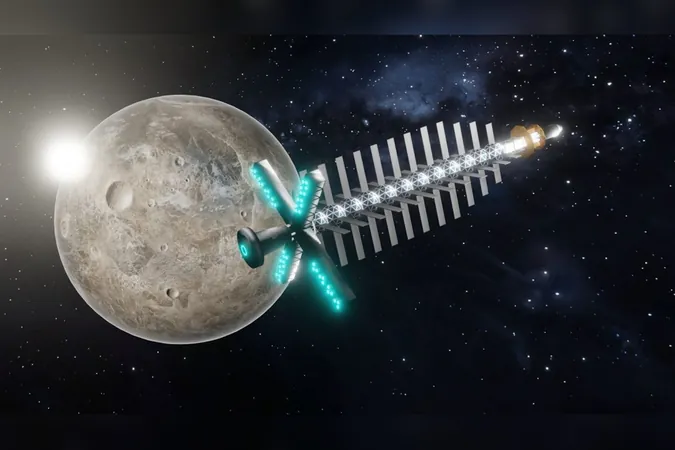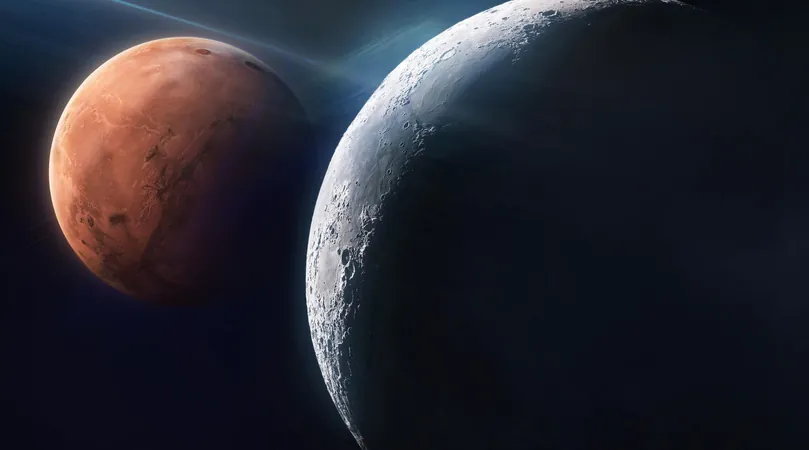
The Future of Space Travel: Nuclear-Powered Spacecraft Set to Launch by the 2030s!
2024-11-19
Author: Emma
Introduction
A groundbreaking initiative has just marked its initial stride toward what could emerge as a revolution in space travel—a consortium of companies has embarked on an ambitious 11-year project aimed at launching the first nuclear-powered space tug into orbit. Dubbed RocketRoll, this initiative is poised to transform how we power our space technologies in the coming decades.
The RocketRoll Initiative
RocketRoll lays down a comprehensive roadmap for advanced propulsion systems, essentially taking us to a time when space agencies might have a viable nuclear option for powering their missions. The project's recent completion signifies that the consortium can now transition to designing and eventually launching a technology demonstrator. This pioneering spacecraft could position nuclear propulsion as the go-to solution for future space explorations.
Current Challenges in Spacecraft Propulsion
Spacecraft currently rely on various types of rocket fuels, each presenting its own set of pros and cons. One major drawback is space consumption; traditional fuels occupy precious room on a spacecraft, and once depleted, they leave the vessel at the mercy of gravitational forces and the unforgiving vacuum of space.
Efficiency of Nuclear Propulsion
Experts from the European Space Agency (ESA) predict that "nuclear propulsion can be multiple times more efficient than the most efficient chemical propulsion," potentially unlocking avenues of exploration that conventional technologies cannot reach.
Researching Power-Generating Systems
To tackle these challenges, space agencies are actively researching power-generating systems that can operate away from Earth—from solar sails harnessing sunlight to the creation of space-based nuclear reactors. The RocketRoll initiative—an acronym for the more complex "Preliminary European Reckoning on Nuclear Electric Propulsion"—aims to present a nuclear electric propulsion system as a working technology demonstrator by 2035. This prototype will test the concept and identify any gaps in the technology before launching more ambitious missions.
Future Uses of Nuclear Electric Propulsion
According to ESA, RocketRoll will investigate the advantages of utilizing Nuclear Electric Propulsion (NEP) for demanding future missions in space logistics and exploration. The technology may become instrumental in powering habitats or robotic explorers on the surfaces of the Moon and Mars, or for other space operations beyond simple propulsion.
Nuclear Power Generation Options
With a ten-year timeline ahead, the consortium is still navigating how nuclear power will be generated aboard the demonstrator. Key options include radioisotope and fission systems, the latter being a prominent choice for ongoing nuclear propulsion projects.
Understanding Nuclear Fission and Fusion
It’s essential to distinguish between nuclear fission and fusion—while fission splits atoms to produce energy, fusion combines them and is the process powering our Sun. Though fusion generates more energy and less waste, it has yet to be achieved as a commercial energy source, despite its potential. Currently, nuclear power accounts for approximately 20% of the United States' energy consumption annually.
Recent Developments in Nuclear Propulsion Technology
In a significant move this year, the Pentagon granted Lockheed Martin a $33.7 million contract under the JETSON program (Joint Emergent Technology Supplying On-Orbit Nuclear) to develop nuclear propulsion technologies. Additionally, NASA and DARPA are collaborating with Lockheed Martin to create the Demonstration Rocket for Agile Cislunar Operations (DRACO), which will also utilize fission energy. Meanwhile, Rolls Royce has made notable advancements toward a nuclear engine prototype.
NIAC and Advancements in Nuclear Concepts
In an exciting development earlier in 2023, NASA’s Innovative Advanced Concepts (NIAC) program selected a pulsed plasma rocket powered by fission energy as one of its six promising mission concepts, indicating a firm commitment to exploring the potential of nuclear power in space exploration.
Conclusion
As we approach the next decade, the RocketRoll project and its peers signify a major leap toward a future where nuclear-powered spacecraft might not just be a possibility, but a reality—paving the way for groundbreaking missions across our Solar System! Buckle up!









 Brasil (PT)
Brasil (PT)
 Canada (EN)
Canada (EN)
 Chile (ES)
Chile (ES)
 España (ES)
España (ES)
 France (FR)
France (FR)
 Hong Kong (EN)
Hong Kong (EN)
 Italia (IT)
Italia (IT)
 日本 (JA)
日本 (JA)
 Magyarország (HU)
Magyarország (HU)
 Norge (NO)
Norge (NO)
 Polska (PL)
Polska (PL)
 Schweiz (DE)
Schweiz (DE)
 Singapore (EN)
Singapore (EN)
 Sverige (SV)
Sverige (SV)
 Suomi (FI)
Suomi (FI)
 Türkiye (TR)
Türkiye (TR)